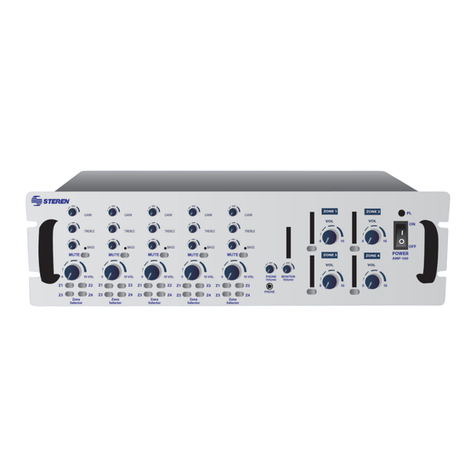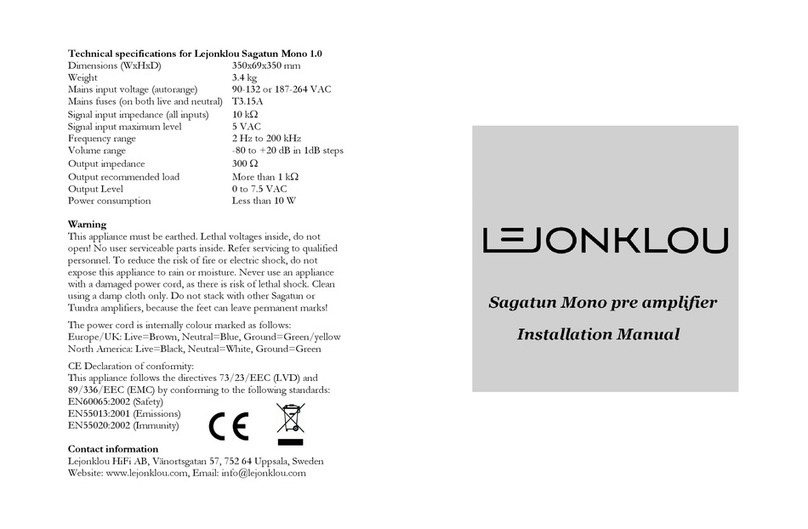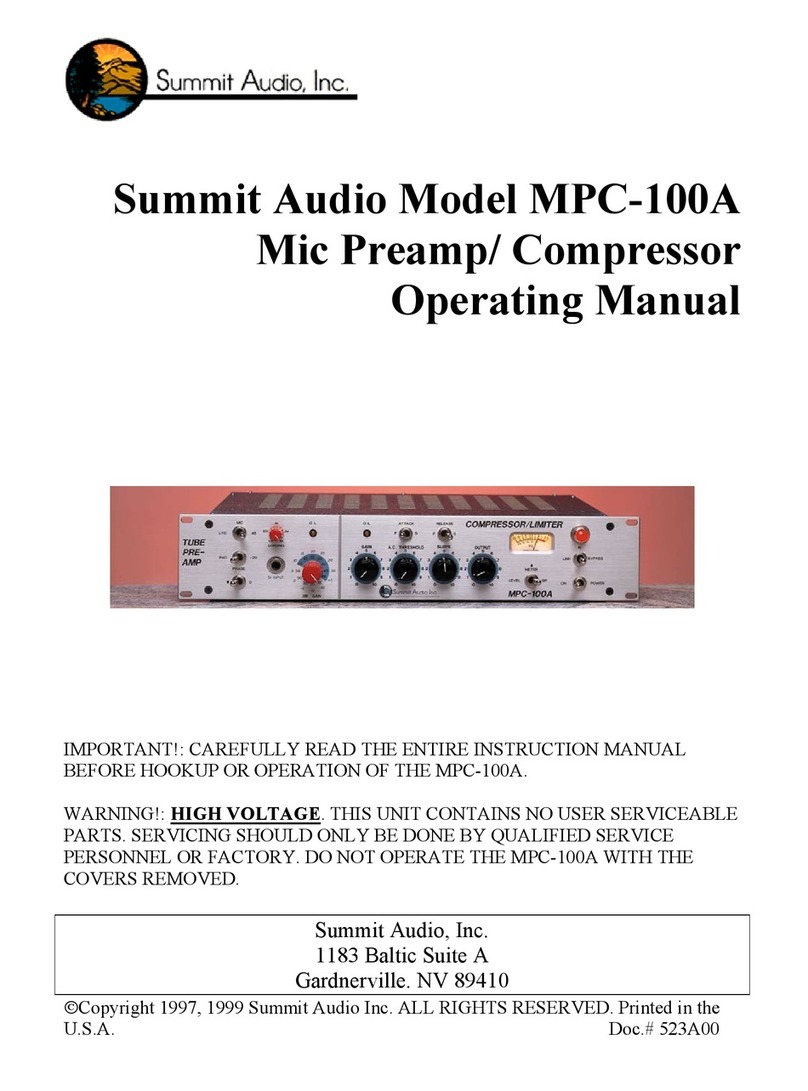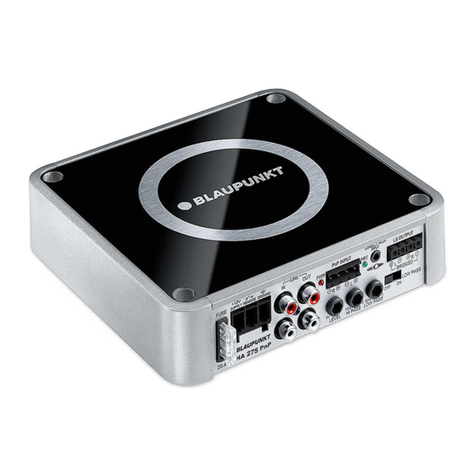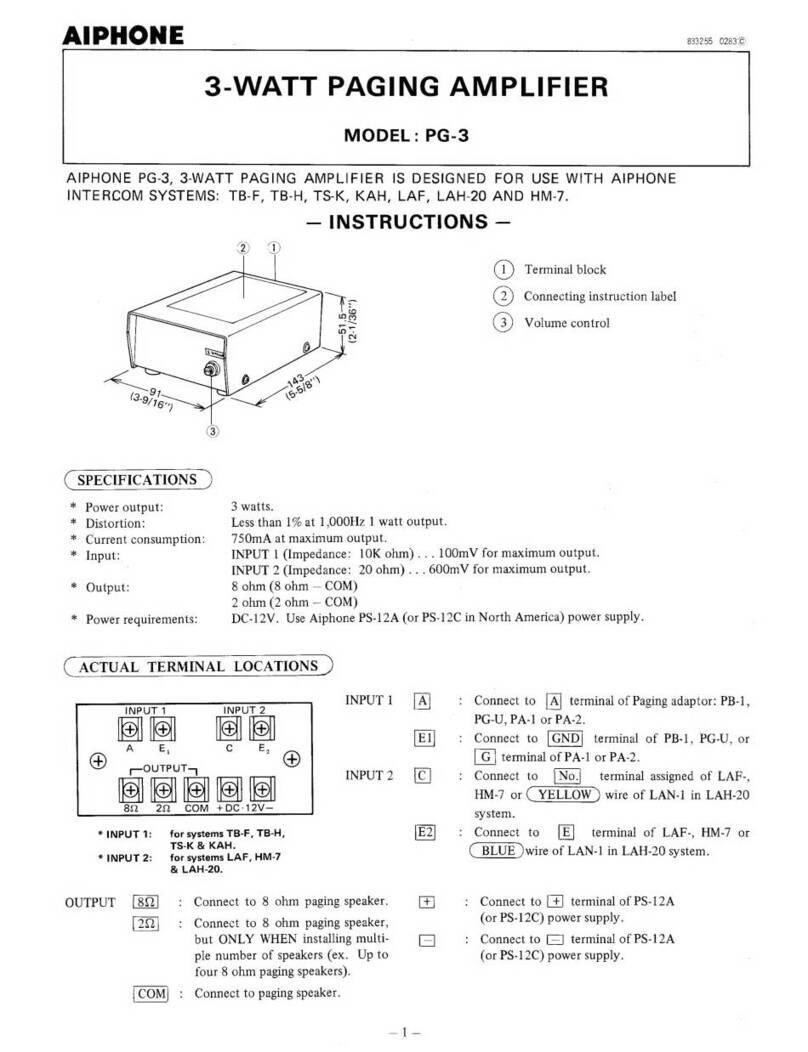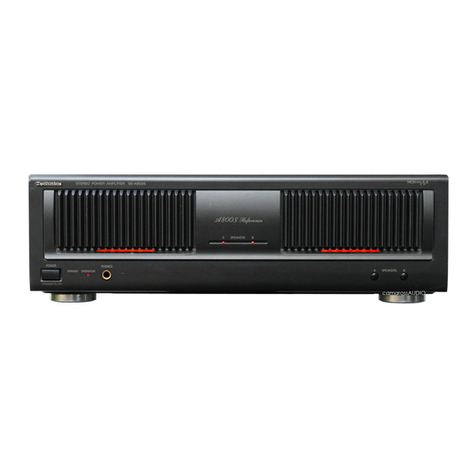ACOUSENCE dac-pre MKII User manual

dac-pre MKII
DA converter / preamplifier
arfi-reference-DAC- or arfi-DAC-topology
(4 or 8 converters generate a stereo signal
per (premium) transformer I/V stage)
Output amplifier with two switchable levels
Output transformer outputs XLR and RCA (optional)
Two digital inputs of your choice (AES/EBU, BNC, Cinch, Toslink, or "arfi-optical")
One transformer balanced analog input, XLR and RCA (optional)
Modular slots for additional digital input or a second analog input
fully balanced volume control via switched fixed resistors;
classic operation via rotary knob/motorized potentiometer
Remote control for volume and source selection
optional:
Phono-MM or Phono-MC module,
USB connection to computer via "arfi-optical"
User's manual

2
ACOUSENCE dac-pre
DA converter / preamplifier
The new centerpiece of your music system: DA converter and pre-amplifier.
Recall your last greatest experience of a live musician's performance! Moments of
emotional impact and enrichment of your mind and spirit that music can create.
Bringing these magical moments home at any time is the reason for having an
extensive music system in your home.
Since music today is usually in digital form - from CD to high-res streaming - the
ACOUSENCE dac-pre
DA converter pre-amplifier becomes the centerpiece of such
musical equipment. The key to music lies in the adequate conversion of digital music
data into analog - "real" - music. This is where it is determined whether music is
touching.
This core task is performed by the digital-to-analog converter or "dac" for short. At
the same time, however, other supplementary tasks of a classic preamplifier are also
included: The management of analog sources incl. Phono-MC or Phono-MM, as well
as the direct control of the power amplifier or active speakers via a high-quality
volume control. At the same time, the optional phono stage is much more than just
an addition: in our devices analog record playback is treated with the same attention
to detail like digital music playback.
Making less is more
Most of the sonically important tasks are already combined in this one device. This
offers great advantages because a greater complexity of the setup would only put
unnecessary hurdles in the way of the longed-for music enjoyment: many individual
components want to be carefully combined and connected. Only the tasks that are
better done in separate units anyway are still outsourced. For the following stage, we
offer the
pow-amp
power amplifier as the perfect complement. As a stage before
that, our music server
mu-se
is the ideal player for organizing the digital music data
and controlling the playback. This creates a lean and well-coordinated setup as a
simple way to your personal music experience!

3
Versions
The
ACOUSENCE dac-pre
is available in two versions: The
"standard"
works with our
sophisticated arfi-DAC topology, i.e. four converter signals generate the stereo signal
per transformer I/V stage. The
"reference"
works with the arfi-reference DAC
topology, i.e. eight converter signals generate the stereo signal per premium
transformer I/V stage. The musical characteristics of both versions are very similar,
but the
"reference"
delivers a bit more detail with even more dynamics. A later
upgrade is also possible.

4
Installation
Carefully unpack the unit and please keep the original packaging. The carton is
specially designed for this instrument and provides safe protection during
subsequent transports.
If the unit was exposed to extreme cold (e.g. during transport), wait until the unit has
warmed up to room temperature and the condensation has evaporated completely
before putting it into operation.
Before installing the unit on sensitive surfaces, it may be advisable to check the
compatibility of the surface with the unit feet, e.g. at an invisible location.
Please place the device horizontally on a firm, level surface. The surface on which
audio equipment is placed generally influences the sound quality that should not be
underestimated. The surface should therefore be as heavy and stable as possible.
! At the same time the case serves for cooling
and therefore must not be covered!
The installation may only be done in a well-ventilated, dry place, avoiding direct
sunlight and the proximity of radiators. When installing racks, shelves, or cabinets, it
is important to ensure that sufficient air supply is available. Make sure that the heat
of the device can be discharged. An accumulation of heat affects the service life of
the device and is a source of danger. First and foremost, air circulation should be
maintained through the sides of the perforation. However, the cover and base of the
device also serve to discharge heat. In racks, a distance of 1U to the next device should
ideally be maintained. Smaller distances are possible with good lateral ventilation if
the heating of the device is checked. No heat-insulating objects (e.g. other devices
with a flat base plate without feet) may be placed directly on the housing.
The unit must not be placed near heat-producing, heat-sensitive, or easily
combustible objects or devices. No liquids or foreign bodies may enter the unit
through the unit openings. Protect the device from dripping and splashing water.

5
Power connection
This device is designed to be operated from a protective earth socket. Please connect
the device to an appropriately grounded socket using the enclosed power cord. The
power supply required for the main unit can be found on the label. Power cords must
be routed so that there is no risk of damage (e.g., from foot trafficor furniture). Special
care must be taken at the connection points. Do not apply excessive force to the
power plug.
There is a pushbutton switch on the front panel with which the unit is switched on.
However, the main switch on the rear of the device in the IEC terminal must also be
observed. This must be set to I to operate the device. The LED next to the pushbutton
switch on the front panel signals this standby mode. Only when the main switch is in
the position O, the device will be completely de-energized. If the device is not used for
a longer period, the main plug should be pulled out of the socket.

6
Analog audio connections
If only one analog input is equipped, this analog input pair can be found under
ANALOG IN. If a second analog input is equipped, this analog input pair can be found
under OPTION. The inputs are transformer-balanced as XLR and optionally as RCA
jacks. The RCA jacks are then connected in parallel to XLR. Please always use only one
of the two pairs of connectors (XLR or RCA). The only exception is the phono module;
if equipped. Here there is a switch between RCA and XLR.
The analog output ANALOG OUT outputs the audio signal of the DAC or the selected
analog input signal ANALOG IN or OPTION. The volume is analog controlled. The
output is electrically decoupled by a transformer and ungrounded by default.The XLR
and RCA outputs (the latter optional) are connected in parallel. Again, please use only
one of the two formats (XLR or RCA).
Notes for unbalanced connections via XLR jacks
Since the signals are completely electrically decoupled by the transformers, pin
1/case, pin 2 and pin 3 of the XLR should be used. The connection from pin 3 to the
ground should ideally be made only in the RCA connector. An appropriately
configured connection cable with ideal grounding can be purchased as an optional
accessory. In any case, a solution using an adapter via the XLR jacks should be
preferred over the RCA jacks. The RCA jacks are optional for compatibility reasons.
However, using the XLR outputs always gives better results.

7
Digital audio connections
DIGITAL1 and DIGITAL2 are the digital inputs to the DAC. Under OPTION, another
digital input can be equipped.
So there are up to three slots for various modules, which can be equipped customer-
specific. The following options are available:
- balanced 110Ω(AES/EBU) to RJ45 Ethercon jack or XLR, galvanically isolated by a
high-quality transformer with shield winding and low capacitive coupling. Also
accepts SPDIF via adapter (as special accessory).
- unbalanced 75 Ω(SPDIF) on RCA or BNC socket, galvanically isolated by a high-quality
transformer with shield winding and low capacitive coupling.
- optical in Toslink standard
- optical in "arfi-optical" standard, for connection of an
ACOUSENCE mu-se
or an
external USB module.

8
Operation
Input selection
With this rotary switch on the left side of the device, up to four input sources can be
selected. Depending on the equipment of the device, individual positions may have
no function.
Digital 1-2, as well as option (if equipped with digital input), selects the input signal for
the DA-converter. Analog, as well as option (if equipped with analog input), switches
the respective analog input to the analog output instead of the internal DA-
converter. The inputs can also be selected by remote control.
"super-analog" reconstruction filter
This DA-converter has a sophisticated enhancement, which especially allows CD-
quality recordings to shine with more clarity, body, and with special musical finesse.
The greatest gain is usually heard in recordings released on CD in the 80s, which tend
to be annoying. The better the recordings, however, the sooner the enhancement
can be dispensed with. Very good recordings may even sound better without this
"special filter".
Therefore, this filter can be switched on separately by selecting the two or three
digital inputs a second time. If you turn from Digital 1 to the left, the digital inputs are
selected again in sequence. In addition, the LED for analog now also lights up yellow.
So if a digital input is red and at the same time the analog input is yellow, the DAC is
working with a "super-analog" reconstruction filter.
Volume control (output level)
The volume is controlled by a network of switched high precision fixed resistors.
However, the volume is adjusted quite classically via a potentiometer: the large knob
on the right. With the remote control, this knob is moved by a motor drive.
The push-button +10dB switches on an additional gain of 10dB.
ATTENTION! The level jump when activating +10dB is quite significant. This can cause
damage to material (loudspeaker) as well as to humans (hearing). So please always use
it very carefully!

9
Indicator of the sample rate at the input
The sample rate indicator shows the frequency of the selected digital input. 44.1kHz
is at the bottom, 192kHz is at the top. The other four common sample rates (48kHz,
88.2kHz, 96kHz, 176.4kHz) are in between. If no valid digital signal is present, no LED is
lit.
Note the following special feature:
If a valid digital signal is applied or selected via input selection, or if the sampling rate
is changed, the audio signal is always switched directly. However, the device runs for
a few seconds on a kind of "auxiliary PLL" with a reduced quality compared to the main
PLL. During this time, the high-precision clock recovery, the "arfi-femto-reclocking",
first detects the sampling rate and then adjusts the operating parameters
accordingly. Then the clock source is switched automatically. Only when an LED lights
up for one of the six possible sample rates, the "arfi-femto-reclocking" is active. (In
fact, switching from the "auxiliary PLL" to "arfi-femto-reclocking" usually happens
even a close second before the LED lights up).
Phono module (optional)
If the optionally available phono module is equipped, the ANALOG IN inputs is
connected to it. If RCA inputs are also equipped, there is a toggle switch on the rear
panel for switching between RCA and XLR. Here, in principle - in contrast to all other
RCA connections - both connections could also be assigned in parallel and the
respective source could be selected via the switch. As a rule, however, this should be
a basic setting that is made once to match the existing turntable. Therefore, the
switch is located at the back near the connection sockets. Switch pointing
downwards towards RCA selects RCA; pointing upwards towards XLR selects XLR.
The module is - as indicated at the time of ordering - permanently equipped for MM
or MC. However, a later change is quite uncomplicated by exchanging the two input
assemblies. Please talk to your dealer.

10
Phono module, adjustment possibilities
Internally there are adjustment possibilities to the respective sampling system.
Phono-MM capacities from 10pF to 470pf are switchable, with Phono-MC impedances
from 100 to 500 Ohm.
To do this, please de-energize the unit with the toggle switch at the back of the IEC
terminal or unplug the unit. Then unscrew the two upper screws in the front panel
with an Allen key. Now the cover can be lifted on both sides at the front and can be
folded up quasi-like on a hinge that holds it at the back. The top can then also be
removed completely by taking it out of the rear serrations.
You can then see two registers on the phono module, each with six slide switches. To
activate the corresponding value, move the corresponding slide switch in the
direction of the printed value. Capacitances maybe activated several times in parallel;
the values then add up. Intermediate values can be formed by activating two
impedances.
Then carefully place the cover again with its serration in the serration of the housing
and carefully close it. Replace the screws and tighten them.

11
Care and maintenance of the unit
The surfaces of the device should only be wiped with a soft, dry cloth for cleaning. Do
not use any harsh cleaning agents or solvents!
The device may only be opened by a qualified specialist. Repairs must be carried out
by an authorized specialist workshop. Apart from the actions described in the
operating instructions, the user must not carry out any work on the device.
In the event of damage or if there is any suspicion that the device is not functioning
properly, the mains plug should be disconnected immediately and the device taken
to an authorized specialist workshop for inspection.

12
Warranty conditions
If contrary to expectations, a fault should occur that you or your specialist dealer
cannot rectify, we will repair your device free of charge for up to three years after the
date of purchase. The warranty covers material and labor; any transport costs
incurred will be borne by the owner from six months after the date of purchase.
Regardless of the country in which the device was purchased, German law is generally
applicable for warranty claims and warranty processing.
Prerequisites for your warranty claim are:
1. the device must have been purchased from a dealer authorized by ACOUSENCE.
2. the defect must not have been caused by improper handling or tampering with the
unit.
3. in case of repair, the unit must be sent to us in its original packaging. If you no longer
have the original packaging, please contact your dealer. If you wish, we can also
provide you with packaging directly for a small fee.
4. a short description of the fault must be enclosed with the device sent in.
In case of doubt, we reserve the right to request a copy of the purchase invoice. In
case of an unauthorized return, or if there is no damage to the device, we reserve the
right to charge a handling fee.
NOTE: If you are not shipping your unit from Germany, please ensure that you have
proper export documentation. Unfortunately, we cannot assume any costs arising
from improper export, failure to declare, or customs clearance.

13
Technical data
Up to 3 digital inputs, different formats:
balanced 110Ω(AES/EBU) to RJ45 Ethercon jack or XLR, galvanically isolated, input
voltage according to AES/EBU. Also accepts SPDIF via adapter (as special accessory).
unbalanced 75 Ω(SPDIF) to RCA or BNC socket, galvanically isolated, input voltage
according to IEC.
optical in Toslink standard (input only)
optical in "arfi-optical" standard
input format linear PCM 44.1 kHz; 48 kHz; 88.2 kHz; 96 kHz; 176.4 kHz; 192 kHz / 16 bit-
24 bit
2 or 4 analog inputs (optional), level up to approx. +21 dBu max., transformer-
balanced, impedance 17kΩ(Cinch (optional) and XLR, parallel)
or
2 inputs for phono MM, RCA (optional) or XLR, via input transformer, impedance
47kOhm, capacitance internally switchable in seven steps, factory setting approx.
47pF
or
2 inputs for phono MC, Cinch (optional) or XLR, via input transformer, impedance
internally switchable in seven steps, factory setting approx. 150 Ohm.
analog output, balanced, floating via high-quality output transformers, output level
at 0dBfs or full scale: approx. 10dBu/2.5Vrms or at "+10dB" 20dBu/7.8Vrms,
impedance <240 ohms (RCA and XLR, parallel)
Frequency response: 20 Hz - 87 kHz

14
power supply unit:
shielded mains transformer + input filter
Input voltage EU version: 230 Volt, 50 Hz
Input voltage US version: 115 Volt, 60 Hz
Dimensions: 450x50x315mm (case) or with feet 450x57x315mm (WxHxD)
Weight: 7 kg
Specifications and equipment are subject to change without notice.

15
Prescribed use
This device is intended for audio reproduction in-home or professional studio
environments only, in dry rooms, and under consideration of all information given in
this manual.
Declaration of Conformity
The device in its original condition complies with the currently valid German and
European regulations. It is approved for intended use in the EU.
By affixing the CE mark to the unit, ACOUSENCE declares conformity with the EU
directives and the national laws derived from them. The necessary tests have been
carried out with positive results.
Local collection points for electronic waste are available for the subsequent disposal
of this product.
WEEE-Reg. No. DE 88052519

16
ACOUSENCE KG
Eleonorenstrasse 5
55597 Woellstein
GERMANY
Phone: 06703 305230
info@acousence.de
www.acousence.de
Table of contents
Popular Amplifier manuals by other brands

Electro-Voice
Electro-Voice Mixer Amplifier MA-1212 Instruction manual and users guide
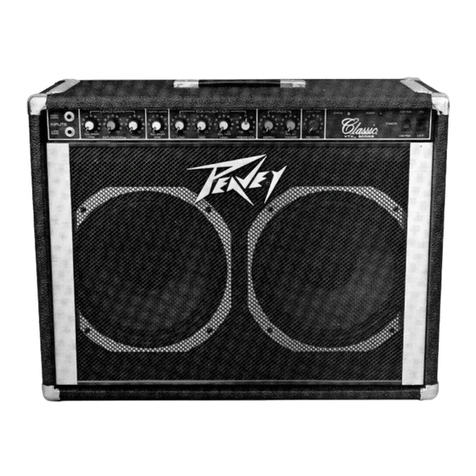
Peavey
Peavey Classic VTX Series operating guide
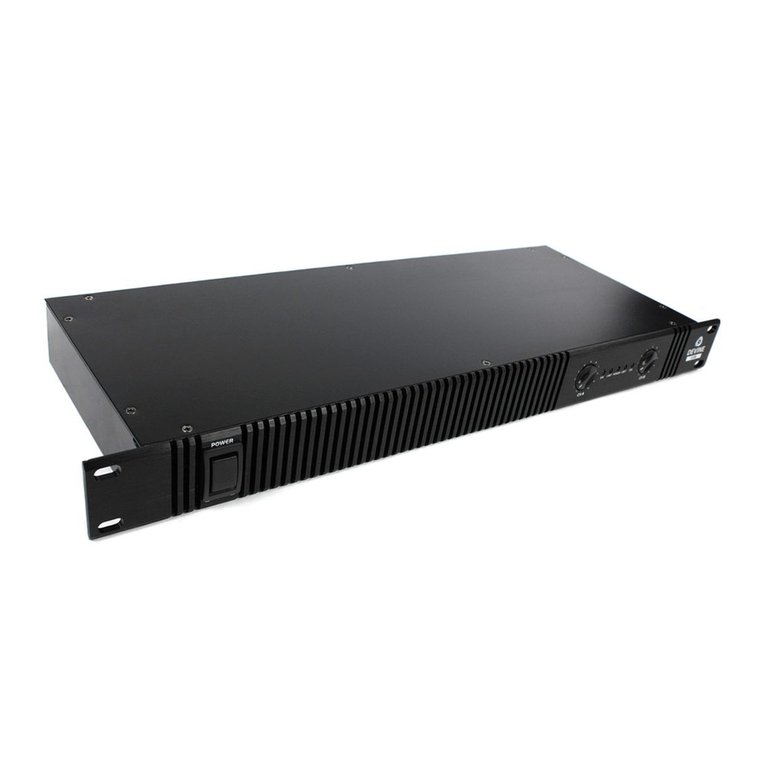
Devine
Devine D-Series user manual
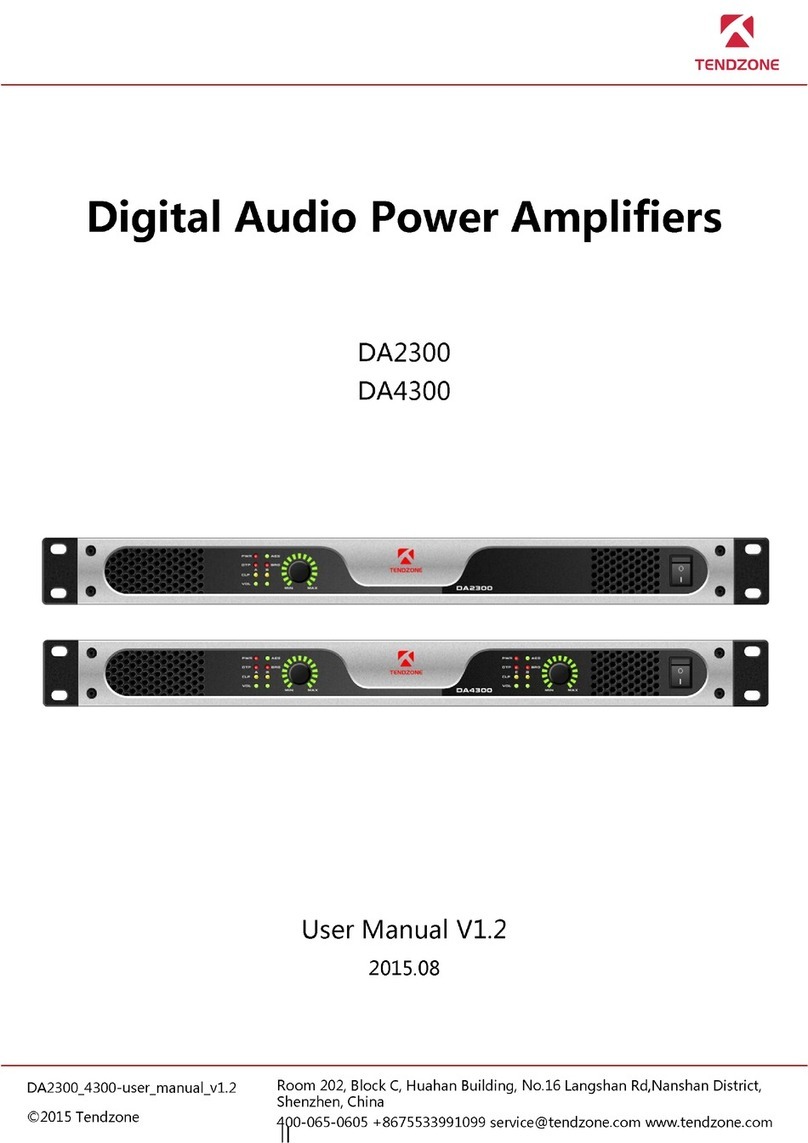
TENDZONE
TENDZONE DA2300 user manual

Crate
Crate Thunder Bass BX-220H owner's manual

RCS AUDIO-SYSTEMS
RCS AUDIO-SYSTEMS DBA-250D operating instructions
